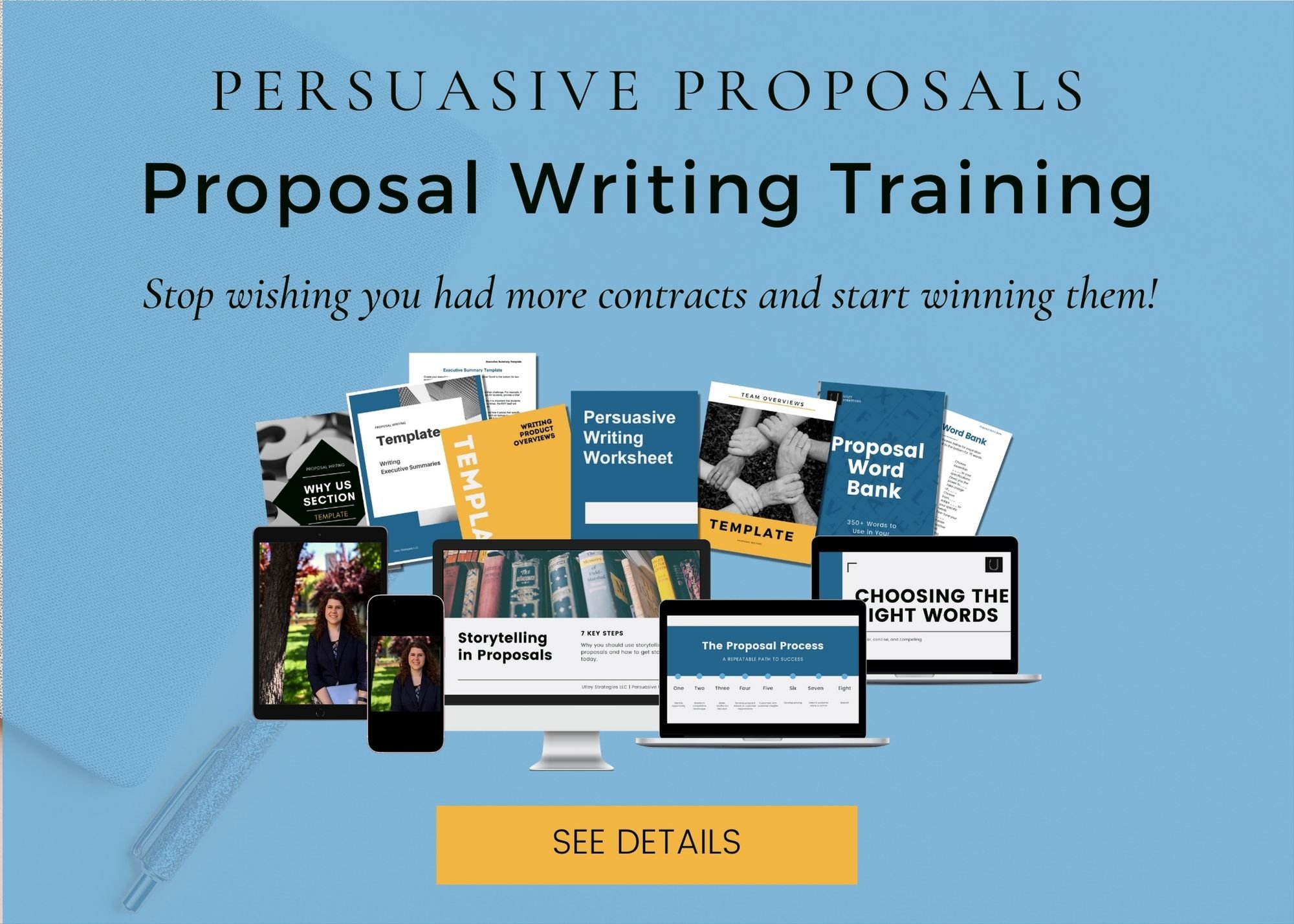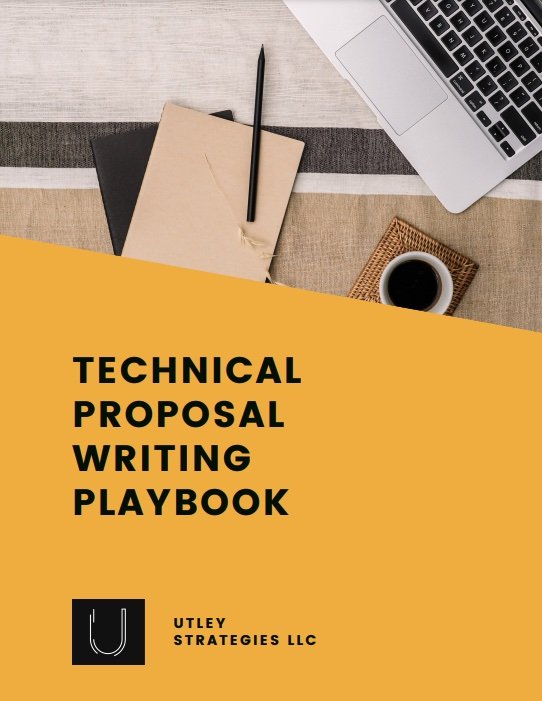9 Theme Ideas to Inspire Your Next Proposal
When writing proposals, developing key themes allows you to create a more cohesive and compelling proposal that speaks to the client. These themes are a key part of storytelling, and with some planning up front, you can more easily incorporate those themes and supporting points into your content.
The first step is understanding the key reasons the customer is buying (i.e. their pain points). Once you know that, the next step is to gain insight into your competition to develop your key differentiators. Combine those two and you have a starting point for your proposal themes.
This sounds easy in theory, but applying this to your proposals can be much harder. Below are 9 common proposal themes to inspire your next proposal.
Note: these are more general than what you would actually use, but they are perfect for some inspiration to get started.
Cost Savings
Many buyers want to make sure they are buying the most efficient solution, which is why cost savings is a very popular and common key theme. Cost savings does not have to mean you are the lowest priced, however. Cost savings may be that the client current has a complex set up where they pay for many redundant systems and you offer one simplified solution. Or perhaps your team is more efficient and more prepared than the current provider, which means you can complete the job faster, even though you have a higher rate. In general, cost savings is calculated from their current state, and you can incorporate this theme in many ways throughout your proposal.
Why it’s common: No one wants to spend money on something they don’t need, and buying committees like to understand the overall value. Creating a pitch around the total amount saved is an easier pitch than something less tangible.
Examples of supporting points:
Showing the client’s current ecosystem and how it is simplified with your solution
Calculating amount spent on add-ons from current provider (i.e. fees for service calls, shipping, design revisions, travel expenses, equipment, etc.)
Chart comparing the average billable time on common tasks to show your efficiency
Increased Revenue
Similar to cost savings, organizations love to see ways that they can increase their revenue. If this is something you can offer, then highlight this within your proposal.
Why it’s common: For businesses, increasing revenue is almost always a top priority. Tapping into this in your proposal shows you recognize their goals and can help achieve them.
Examples of supporting points:
Metrics that show how you increase revenue (i.e. better user experience, happier employees, better technology)
Client case studies to show real results
Time Savings
More and more companies are forced to do more with smaller teams, which means everyone is trying to figure out how to automate processes and optimize their resources. Highlighting time savings within your proposal can speak directly to one of their strongest pain points.
Why it’s common: Time is finite, and all organizations want more of it. Many buyers choose to start the procurement process because they know it will take too long to complete the project internally.
Examples of supporting points:
Clear timelines for when the work will be completed (i.e. make it clear that working with you is faster than internally)
Outline the process/workflow and how your solution simplifies steps to make it faster
Shipping times, fulfillment efficiencies, and other ways that you cut down on physically delivering products
Convenience
Convenience is very similar to time savings, but it may be an entirely different theme depending on what you are proposing. For example, having a portal where clients can reorder their most common purchases is convenient. Enabling an auto-refill option saves even more time. How you position these themes will depend on the customer’s pain points and the competition.
Why it’s common: With many aspects of our personal lives becoming “on-demand”, more B2B buyers expect the same level of convenience at work.
Examples of supporting points:
Ability to text or chat customer support 24/7/365
Tailored dashboards and portals
Designed based on user experience
Physically located near customer
Integration with systems customer currently uses
Limited client involvement for implementation
Expertise/Staff Experience
If you’re responding to an RFP, then the project is likely for a significant sum of money for the client. This makes your team’s expertise even more important to determine if you can successfully complete the job. Use this theme to establish trust with the client, especially if your team and/or company has more expertise or experience than the competition.
Why it’s common: Not everyone has the exact experience for the project. Client’s want the work done right, and if you can prove that you have done work like this before unlike the competition, they’ll be more likely to work with you.
Examples of supporting points:
Past project case studies
References
Awards
Certifications
Publications
Resumes
Reviews/testimonials
Customer Support
When selling products (digital or physical), customer support will likely be a key theme for some of your competitors. If you have superior customer support, this should be a key theme within your proposal to make the customers feel safe to purchase from you.
Why it’s common: Clients want to know that they can contact you if there is an issue, especially for large purchases.
Examples of supporting points:
24x7x365 customer support
Direct customer support phone line, chat, email, texting, or other communication options
Multiple languages spoken by support team
US-based support
Internal customer support team (i.e. not outsourced)
Quarterly check ins
Customization
Every organization operates in a different way, which means many one-size-fits-all solutions might not work. This isn’t always the case, but if your proposal is going to a client who feels this way, highlighting customization as a key theme within your proposal can set you apart.
Why it’s common: This is a combination of the cost savings, time savings, and convenience themes. Customization allows clients to achieve all of these things and realize a solution that’s made for their specific needs.
Examples of supporting points:
Custom designed and built solutions (e.g. website, product, infrastructure, building, team, etc.)
Dedicated account representative who becomes familiar with their needs and can develop tailored recommendations
Easy-to-use technologies that allow the client to have a unique experience (i.e. a dashboard that shows the reports they care about, ability to customize products when ordering)
Industry Knowledge
When a client receives multiple proposals for the same contract, they will naturally gravitate towards companies who have done similar work within the industry. It allows them to feel more confident in their decision to work with you.
Why it’s common: Industry knowledge allows you to share insights with the client and also reduces the amount of knowledge transfer they have to do up front to make the project a success.
Examples of supporting points:
Number of clients supported in that industry
Case studies of similar clients (bonus points for ones nearby or that they admire)
Resumes of staff who have worked in that field
Industry awards
Partnership
Some buyers simply want a company to provide a product or service that they want and then leave. Others want more guidance on best practices and a bit more hand holding. For these clients, highlight that you want to establish a long-term partnership.
Why it’s common: Partnerships and consultative relationships are value-adds for product-based businesses. Establishing a long-term relationship also make future purchases for the client easy, and it sets up your company for future revenue.
Examples of supporting points:
Dedicated account team
Beta testing program
Monthly or Quarterly check-ins
Annual roadmap discussions
Download the *FREE* Technical Proposal Writing Playbook to improve your proposals today!
Next Steps
Now that you know common themes within proposals, it’s time to start creating your own. Each proposal will have different key themes to emphasize in order to address the customer’s needs and the competition. If you need help, let us know.




